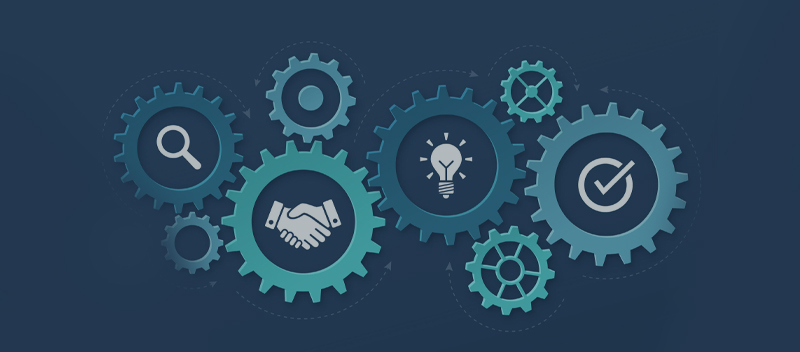Blog SOC 1 vs SOC 2
SOC 1 vs SOC 2

When it comes to keeping your organization’s data secure and compliant, understanding SOC reports is a must. SOC 1 and SOC 2 might sound like technical jargon, but they’re actually quite important for financial reporting and data protection.
SOC 1 reports zero in on internal controls related to financial reporting. Meanwhile, SOC 2 reports cover a broader spectrum, focusing on security, availability, processing integrity, confidentiality, and privacy — making them crucial for service organizations, especially those offering tech and cloud services.
Let’s examine these reports’ main points and the reasons your business should care about them.
Understanding SOC Reports
To navigate the world of compliance and data security, it’s essential to grasp the purpose and types of SOC reports.
1. Purpose of SOC Reports
SOC reports are governed by the American Institute of Certified Public Accountants (AICPA) and are aimed at ensuring that organizations maintain robust internal controls. Here’s why they matter:
- Auditing Processes: They examine the efficiency and effectiveness of an organization’s internal controls.
- Compliance: Help organizations comply with industry standards and regulations.
- Trust Building: Offer reassurance to clients and stakeholders about the reliability and integrity of their service providers. Types of SOC Reports
2. Types of SOC Reports
There are primarily three types of SOC reports, each having its own purpose:
SOC 1
-
- Focus: Internal controls over financial reporting (ICFR).
- Purpose: To assure the users regarding the financial statements of the service organization.
- Most probable users: Management of such service organizations, user entities, and auditors of financial statements of such user entities.
SOC 2
-
- Focus: Security, availability, processing integrity, confidentiality, privacy controls.
- Purpose: aims to tackle much more governance and management of risks related to the protection of information and its internal controls and processes in the organization.
- Most probable users: Individuals or organizations concerned about data protection, more so security and privacy.
SOC 3
-
- Focus: Same as SOC 2 but directed to a general audience.
- Purpose: To give descriptive information about the controls of a service organization without the rich detail of a SOC 2.
- Most probable users: Any interested individuals, potential clients, market players, and even competitors.
Grasping such SOC reports and their variations will also assist the organization in selecting the most suitable report to address compliance demands and build trust with clients and stakeholders.
For more on our SOC compliance services, Click Here
SOC 1 Report in Detail
SOC 1 reports are crucial for organizations whose services directly impact the financial statements of their clients. Let’s break down what SOC 1 reports entail, the standards they follow, and where they are ideally used.
1. Definition and Purpose
A SOC 1 report focuses on evaluating the internal controls over financial reporting (ICFR) of a service organization. The main objective is to ensure that these controls are designed and operating effectively to accurately process financial data. This type of report reassures clients and stakeholders that the financial information managed by the service provider is reliable.
2. SSAE 18 Standards (Update from SSAE 16)
SOC 1 reports adhere to SSAE 18 standards, which replaced the older SSAE 16 standards. This change simplified and converged attestation standards related to SOC 1 audits. Additionally, the SSAE 18 also expanded to cover more types of attestation reports (including SOC 2), whereas SSAE 16 was limited to only SOC 1 reports.
3. Type 1 vs Type 2 Reports
SOC 1 reports come in two types:
-
- Type 1 Report: Evaluates the design of controls at a specific point in time. It provides an overview of the system and whether the controls are suitably designed to meet control objectives.
- Type 2 Report: Assesses not only the design but also the operational effectiveness of controls over a period (usually six months to a year). This type of report gives a more comprehensive view of how well the controls function in practice.
4. Ideal Use Cases for SOC 1
SOC 1 audits are particularly important for service organizations that have a direct impact on their client’s financial reporting. Examples include:
-
- Payroll Processing Companies: Handle sensitive employee financial information and calculations critical to financial reporting.
- Loan Servicing Companies: Manage payment processing, interest calculations, and other financial activities impacting the financial health of borrowers.
- Benefits Administrators: Oversee retirement accounts, health insurance claims, and other benefits with financial implications.
- SaaS Providers with Financial Impact: Offer platforms used for financial transactions or reporting, necessitating checks to ensure the integrity of processed financial data.
SOC 2 Report in Detail
SOC 2 reports are essential for service organizations that store, process, or handle customer data, especially when demonstrating a commitment to data security and compliance is critical. Let’s explore the details of SOC 2 reports, including their purpose, criteria, types, and ideal use cases.
— Definition and Purpose
A SOC 2 report is designed to evaluate an organization’s controls related to security, availability, processing integrity, confidentiality, and privacy. Unlike SOC 1, which focuses on financial reporting, SOC 2 addresses a broader scope of data management and protection. The purpose of SOC 2 is to provide assurance to stakeholders that the service organization has implemented effective controls to safeguard data.
— Five Trust Services Criteria
SOC 2 reports are based on five trust service criteria, which form the foundation for evaluating the effectiveness of an organization’s controls:
Security. Information and systems are protected against unauthorized access, unauthorized disclosure of information, and damage to systems that could compromise the availability, integrity, confidentiality, and privacy of information or systems and affect the entity’s ability to achieve its objectives.
Security refers to the protection of
i. information during its collection or creation, use, processing, transmission, and storage, and
ii. systems that use electronic information to process, transmit, transfer, and store information to enable the entity to meet its objectives. Controls over security prevent or detect the breakdown and circumvention of segregation of duties, system failure, incorrect processing, theft or other unauthorized removal of information or system resources, misuse of software, and improper access to or use of, alteration, destruction, or disclosure of information.
Availability. Information and systems are available for operation and use to meet the entity’s objectives.
Processing Integrity. System processing is complete, valid, accurate, timely, and authorized to meet the entity’s objectives.
Confidentiality. Information designated as confidential is protected to meet the entity’s objectives. Confidentiality addresses the entity’s ability to protect information designated as confidential from its collection or creation through its final disposition and removal from the entity’s control in accordance with management’s objectives.
Privacy. Personal information is collected, used, retained, disclosed, and disposed of to meet the entity’s objectives.
— Type 1 vs Type 2 Reports
SOC 2 reports come in two types:
- Type 1 Report: Evaluates the design and implementation of controls at a specific point in time. It provides a snapshot of the control environment and whether the controls are suitably designed to meet the Trust Service Criteria.
- Type 2 Report: Assesses not only the design but also the operational effectiveness of controls over a period (usually six months to a year). This type of report offers a comprehensive view of how well the controls function in practice and whether they consistently meet the Trust Services Criteria.
— Ideal Use Cases for SOC 2
SOC 2 audits are relevant for a broad range of service organizations that handle customer data and need to demonstrate their commitment to data security and compliance. Ideal use cases include:
-
- Cloud Computing Services: These providers store and process vast amounts of data, making robust controls over data security, availability, and privacy essential.
- SaaS Providers (Non-Financial Impact): SaaS platforms that handle customer data (but do not impact financial reporting) require stringent controls to ensure data security and privacy.
- Data Centers: Facilities that host critical infrastructure and data for multiple businesses must assure clients of their physical and environmental controls to maintain operational integrity and security.
- Managed IT Services: Companies offering IT management services need to ensure the confidentiality, integrity, and availability of the systems and data they manage to maintain trust and reliability.
Choosing Between SOC 1 and SOC 2
Choosing between a SOC 1 or SOC 2 report is determined by several factors, including your business’s requirements, the industry you operate in, and the services you offer.
1. Factors
The following issues should be centered on when rushing to make the decision on SOC 1 or 2.
– Type of Services Rendered:
SOC 1: It is applicable when the service affects the accounting activities of its clients, such as payroll processing or loan serving.
SOC 2: It is applicable if such services involve storing and/or processing customers’ data, with more emphasis on security and compliance (like cloud services, and SaaS).
– Legal and Regulatory Obligations:
SOC 1: May be required if your industry has strict regulations around financial reporting and integrity.
SOC 2: SOC 2 does not replace GDPR, HIPAA, or CCPA, but together they enhance data security and privacy.
– Client and Stakeholder Expectations:
SOC 1: Clients concerned with the accuracy of financial transactions and reporting will look for SOC 1 compliance.
SOC 2: Clients and stakeholders who prioritize data security, privacy, and availability will value SOC 2 reports.
2. Decision-Making Guide for Businesses
To determine whether SOC 1 or SOC 2 is the right choice for your organization, follow this decision-making guide:
– Evaluate Your Services:
Do your services have a direct impact on your client’s financial statements?
Yes: Consider SOC 1.
No: Move to the next question.
– Evaluate Practices in Managing Data:
Will you manage, store, or handle sensitive customer information that must be securely protected, available, and private?
Yes: Think about SOC 2.
No: If there are any financial reporting elements, SOC 1 may still apply.
– Determine Compliance Obligation:
Do you have any financial reporting or data protection industry standards or legal obligations that you follow?
For financial reporting: SOC 1.
For data breaches: SOC 2.
– Investigate the Client’s Requirements:
What do your clients and stakeholders demand in terms of assurance and compliance?
Regarding Financial Precision and Integrity: SOC 1.
About Data Security and Privacy: SOC 2.
– Look Into the Future:
Which report supports your long-term goals and the current position in the market?
If aiming to establish credibility in financial reporting, opt for SOC 1.
If prioritizing data security and compliance, go for SOC 2.
In light of these, your organization will be able to select the appropriate SOC report to address compliance requirements, enhance client confidence, and achieve business goals.

The Audit Process
— For a SOC 1 Audit:
-
- Establishing Control Objectives: You should determine which control objectives are important from a financial reporting and operational perspective based on your services. This step entails an understanding of what control is needed, and, most importantly, why.
- Identifying Relevant Controls: Establish and record the applicable controls that are in place in support of your stated objectives. Ensure these controls are capable of reducing the risks associated with such objectives.
- Engaging a Qualified CPA Firm: Determine a CPA specializing in SOC 1 audits. A firm like TrustNet can help you with auditing and help you to conform with AICPA standards.
- Implementing Remediation Measures: Eliminate any lapses or deficiencies in your controls prior to the audit. This measure is important to ensure that the expectation for the integrity of financial reporting standards is achieved.
— For SOC 2 Audit:
-
- Defining Control Objectives: Focus on the Trust Services Criteria applicable to your services — security, availability, processing integrity, confidentiality, and privacy.
- Identifying Relevant Controls: Map out controls that address the chosen Trust Services Criteria. This includes detailing how your organization safeguards and manages data.
- Engaging a Qualified CPA Firm: Select a firm seasoned in SOC 2 audits like TrustNet to ensure your controls meet the rigorous requirements of the Trust Services Criteria.
- Implementing Necessary Remediation Measures: Similar to SOC 1 preparation, remediate any control deficiencies to align with SOC 2 standards, focusing on data protection and privacy.
What to Expect During the Audit
-
- Initial Assessment: The audit begins with an initial assessment where the auditors understand your organization’s control environment and the scope of the audit.
- Documentation Review: Auditors will review the documentation of your control processes, including policies, procedures, and records that demonstrate how controls are implemented.
- Control Testing: For Type 1 reports, auditors evaluate the design of controls at a specific point in time. For Type 2 reports, they assess the operational effectiveness of controls over a period (usually six months to a year).
- Interviews and Observations: Auditors may conduct interviews with key personnel and observe processes in action to verify that controls are functioning as documented.
- Feedback and Remediation: Throughout the audit, auditors may provide feedback on areas of improvement. Addressing these points promptly can help ensure a smooth audit process.
Interpreting Audit Results
Unqualified vs. Qualified Opinions:
-
- Unqualified Opinion: This is the best outcome, indicating that the auditor found no significant issues with the design and operating effectiveness of the controls. It means that the controls are appropriately designed and are functioning effectively.
- Qualified Opinion: Indicates that the auditor found some deficiencies in the design or operating effectiveness of controls. These deficiencies need to be addressed to meet the required standards. A qualified opinion doesn’t mean a failure but highlights areas needing improvement.
The Benefits of SOC Compliance
There are some prominent benefits of achieving SOC compliance for any entity:
1. Improved Reputation and Confidence
Obtaining SOC compliance indicates that organizations operate in highly controlled and secure environments, hence enhancing the reputation among clients and stakeholders and building confidence through the actual commitment to safeguarding the data.
2. Improves Market Position
When you achieve compliance, it tells your target clients that your organization practices a high level of data protection mechanisms, which is very attractive to potential customers, particularly those in markets where security is a paramount concern.
3. Better Risk Management and Improved Security
Compliance initially assesses risks and addresses them, which in turn enhances internal controls and increases the prevention of data and monetary losses, hence making the operation more secure.
Recent Developments and Trends in SOC Reporting
The need for SOC reports has grown as cloud computing and digital transformation have become more prevalent. SOC 2 is especially important since cloud-based service companies need to show that they have strong security and compliance protocols in place. This pattern highlights the necessity of ongoing control monitoring and upgrading in order to protect data in ever-changing digital settings.
Also, SOC reports are becoming more and more interwoven with other regulatory frameworks, such as HIPAA and GDPR. These days, businesses look for SOC audits that satisfy a variety of legal criteria, expediting compliance procedures and offering clients total assurance. This integration improves overall compliance efficiency by guaranteeing that controls not only satisfy SOC criteria but also comply with more extensive legal and regulatory requirements.
The Critical Role of SOC Reports in Modern Businesses
Building trust, boosting credibility, and giving an advantage over competitors are all made possible via SOC reports. They support businesses in efficiently managing risks and ensuring that strict control requirements are met, protecting sensitive data, and upholding operational integrity.
Contact TrustNet today to start your SOC audit journey!
Additional Resources
For further information and to deepen your understanding of SOC reports, explore the following resources:
1. Links to AICPA Guidelines
-
- AICPA SOC Overview: Comprehensive information about SOC reports, including guidelines and standards.
- SOC 1 Report Guide: Detailed guidance on SOC 1 reports and their applications.
- SOC 2 Report Guide: In-depth insights into SOC 2 reports and the Trust Services Criteria.
2. FAQs About SOC Reports
What is a SOC report?
A SOC report is an audit report that evaluates the controls at a service organization, focusing on financial reporting (SOC 1) or data security and privacy (SOC 2).
Who needs a SOC report?
Organizations providing services that impact clients’ financial statements or handle sensitive customer data typically need SOC reports to demonstrate control effectiveness and compliance.
How often should a SOC audit be conducted?
SOC audits are generally conducted annually to ensure ongoing compliance and to address any changes in control environments or regulatory requirements.
What is the difference between Type 1 and Type 2 SOC reports?
-
- Type 1: Evaluates the design of controls at a specific point in time.
- Type 2: Assesses both the design and operating effectiveness of controls over a period (usually six months to a year).






